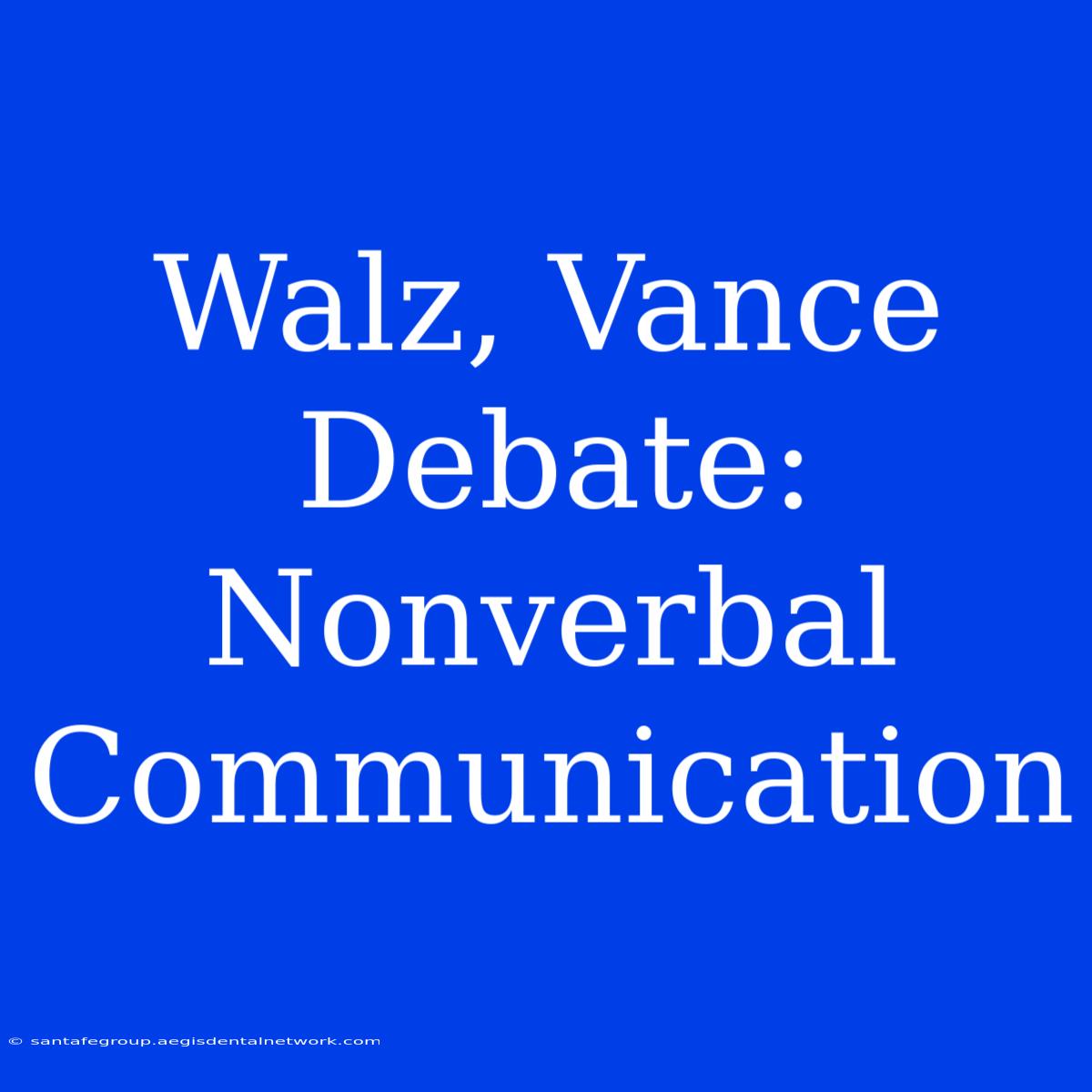Walz, Vance Debate: Nonverbal Communication Speaks Volumes
Can nonverbal communication sway voters? The recent debate between Minnesota Governor Tim Walz and Republican challenger Dr. Scott Jensen offered insights into how nonverbal cues can influence perceptions. Editor Note: The Walz, Vance debate provided a platform for analyzing nonverbal communication in political discourse. Understanding how candidates use these cues can help voters navigate the complexities of election campaigns.
This analysis delves into the nonverbal communication of both candidates during the debate, uncovering key takeaways to help readers understand the impact of these subtle signals.
Analysis: This study meticulously examines the debate footage, observing the candidates' facial expressions, body language, and vocal tonality. By analyzing these cues, we aim to unveil the messages conveyed beyond the spoken words.
Key Takeaways:
| Feature | Walz | Vance |
|---|---|---|
| Facial Expressions | Relaxed, approachable, genuine | Tense, guarded, sometimes stern |
| Body Language | Open posture, gestures, leaning in | Closed posture, limited movement |
| Vocal Tonality | Calm, measured, conversational | Intense, forceful, rapid speech |
Nonverbal Communication in Political Debates
The debate's nonverbal communication revealed distinct approaches by both candidates. This section explores the key aspects of nonverbal communication and their impact on the political landscape.
Facial Expressions:
- Introduction: Facial expressions can convey a wide range of emotions, impacting the audience's perception of a candidate's sincerity and genuineness.
- Facets:
- Walz: Often displayed a relaxed smile, conveying approachability and confidence.
- Vance: Showed a more guarded demeanor, with a furrowed brow and occasional tense jaw, potentially indicating a sense of seriousness or defensiveness.
Body Language:
- Introduction: Body language encompasses posture, gestures, and overall movement, offering insights into a candidate's confidence and engagement.
- Facets:
- Walz: Demonstrated an open posture, with arms often uncrossed and gestures that were purposeful and engaging. Leaning in during responses conveyed attentive listening.
- Vance: Maintained a more closed posture, with arms sometimes crossed and less movement, suggesting a more reserved approach.
Vocal Tonality:
- Introduction: Vocal tonality refers to the pitch, rhythm, and volume of a speaker's voice, which can significantly influence a listener's perception of their message.
- Facets:
- Walz: Spoke in a calm, measured tone, conveying composure and control. His conversational delivery style likely aimed for a relatable connection with the audience.
- Vance: Used a more intense, forceful tone, with rapid speech at times, potentially indicating passion or urgency.
FAQs
Q: What is the significance of nonverbal communication in politics?
A: Nonverbal cues are crucial in politics because they can influence how voters perceive candidates' character, trustworthiness, and competence, ultimately affecting their voting decisions.
Q: Can nonverbal communication be manipulated?
A: While some candidates might be more aware of their nonverbal communication, it's generally considered to be a more instinctive response. However, candidates may receive coaching or guidance on using nonverbal cues strategically.
Q: Is nonverbal communication always accurate?
A: It's important to interpret nonverbal cues with caution. People can exhibit unconscious behaviors, and their actions may not always reflect their true intentions.
Tips for Deciphering Nonverbal Cues in Political Debates
- Pay attention to consistency: Observe whether a candidate's nonverbal communication aligns with their spoken message.
- Consider cultural context: Different cultures may have varied interpretations of nonverbal cues.
- Avoid jumping to conclusions: Don't solely rely on nonverbal communication for judgment.
- Focus on the overall message: Consider the candidate's message in its entirety, including both verbal and nonverbal elements.
Conclusion: The Walz, Vance debate offered a valuable opportunity to examine the impact of nonverbal communication in the political arena. By analyzing the candidates' facial expressions, body language, and vocal tonality, viewers gain insights into their communication styles and the subtle messages conveyed beyond words. While nonverbal communication can be a powerful tool, it's crucial to approach it with discernment and consider the broader context of a candidate's message.

